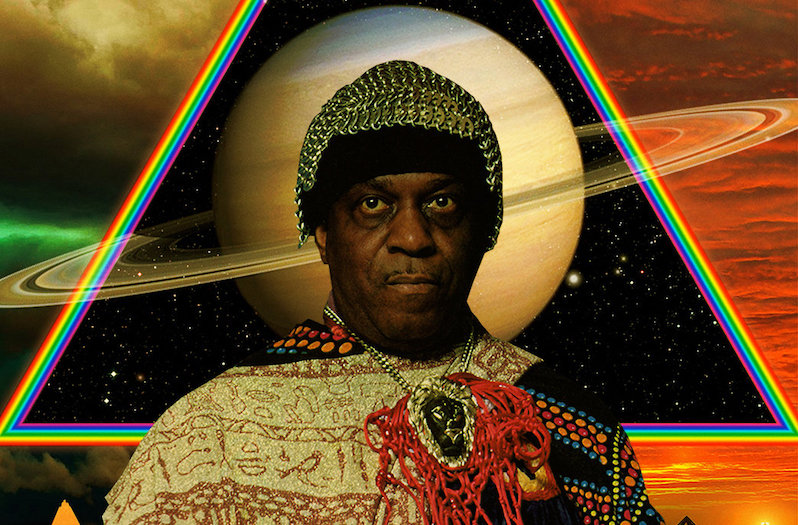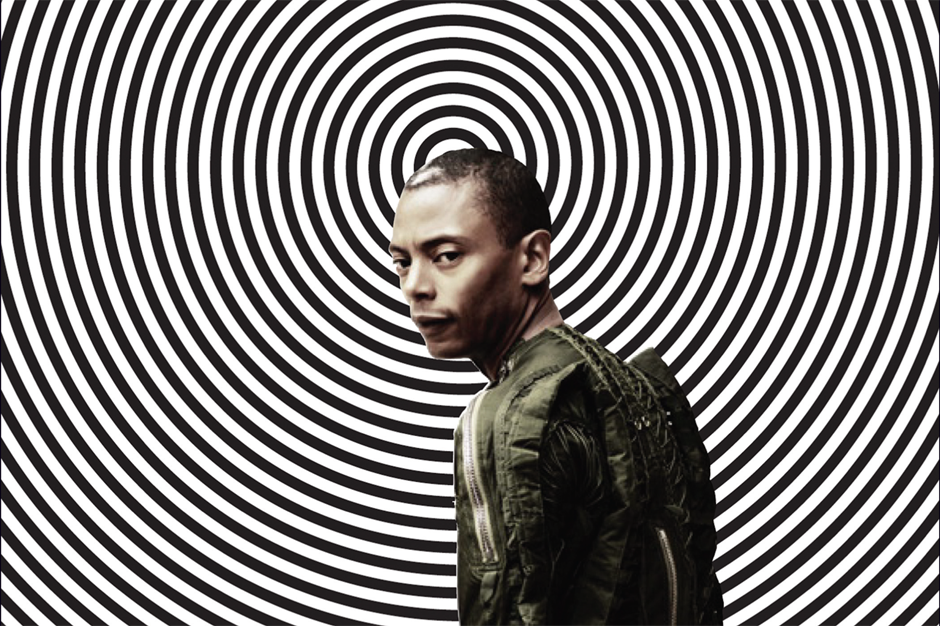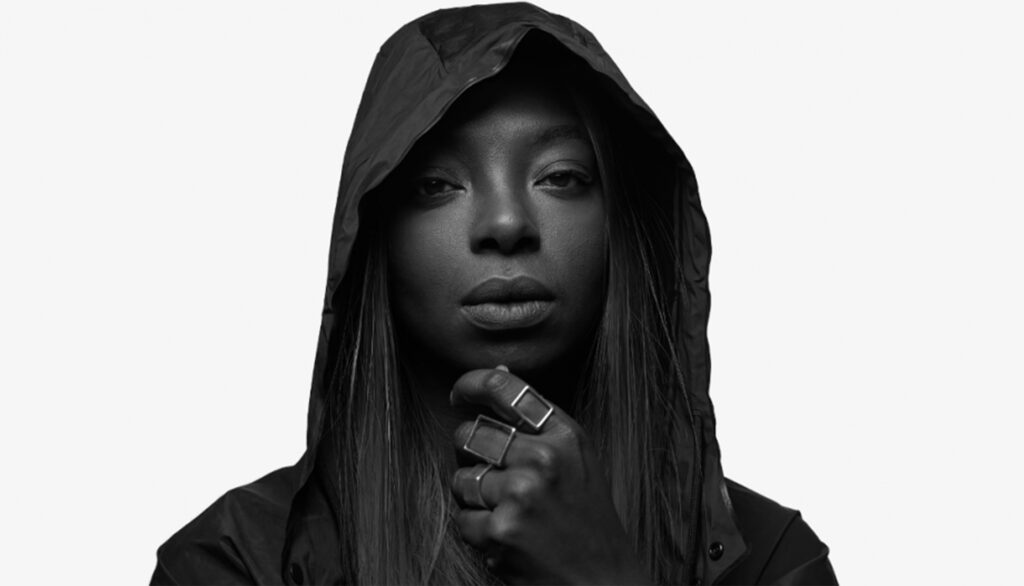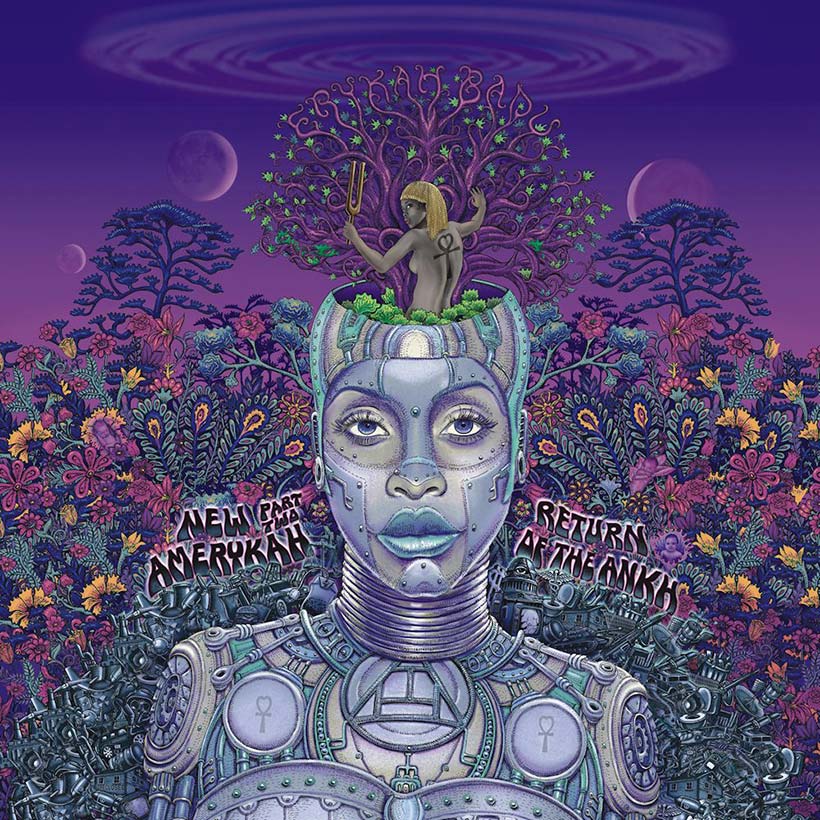Though the upper echelons of the contemporary electronic music industry are predominantly populated by white artists, its origins of young Black men in Detroit using music to transcend their surroundings means Afrofuturism has enjoyed a storied history in the electronic music industry.
From early Detroit techno’s association with gleaming sci-fi imagery to Drexciya’s mysterious mythology imagining an underwater civilisation comprised of slaves thrown overboard, to – more recently – the shamanistic, rhythmic experiments of Portugal’s Príncipe label, the scene has a long lineage of Afrofuturism running in its veins. Given the impact of Afrofuturism on the music we know and love, it’s not a stretch to say that it wouldn’t exist if not for Afrofuturism laying down the foundation.
This article tracks the development of Afrofuturism within modern electronic music, whilst reclaiming the history of this music and shining a light on the many talented Black artists out there. Since structures in society mean that minorities are often marginalised, this serves as a reminder of the inherent blackness running through the scene and the many ways in which it’s been represented.

What is Afrofuturism?
I’ve made some bold claims about Afrofuturism, but what exactly is it you ask? It’s a cultural aesthetic that spans artistic mediums and fuses Black heritage with sci-fi concepts and motifs. Mainstream representation has recently been seen in the zeitgeist-shifting blockbuster Black Panther, with the shimmering oasis of Wakanda being an Afrofuturist haven.
In harnessing the perceived ‘otherness’ of Black people and pairing this with visions of an alternative reality or future, it informs creative expression and uses it as a tool to escape the pain and oppression caused by structural inequality. Through the creation of these alternative realities, new Black experiences and identities are able to be envisaged.
The first recorded use of the term dates back to 1994 after being coined by white author Mark Dery in his essay “Black to the Future” that engaged with prominent figures of the movement; at the time of publication, though there’d been many individuals involved, it had no name. This recognition was consolidated by John Akomfrah’s “The Last Angel of History”, a documentary embedded in a fictional narrative, acting as a meta-narrative that both documented the concept and further developed it.
Given the boundless edges of its existence, it’s use as a concept cuts across literature, music, film, visual art, theatre and more. Operating light years ahead of their time, authors such as Samuel Delaney and Octavia Butler used the concept as an underlying aesthetic informing all of their work, with their books framing the struggles of the everyday Black experience against the backdrop of high-concept science fiction ideas.
In the music sphere, the 50s onwards saw the shapeshifting avant-garde jazz of Sun-Ra and the intergalactic funk transmissions of George Clinton and Parliament Funkadelic serve as some of the earliest examples of Afrofuturism. The cosmic influences in their work and their extravagant outfits embody the restless experimentation inherent in Afrofuturism, whilst their use of galactic imagery evoked a funky, free-loving space where Black people could exist outside the confines of an oppressive system.
Though Sun-Ra was less concerned with issues of race before his death, he identified very closely with the objectives of the Black Power movement in his early performing days, seeing his music as a key element in educating and liberating Black people. The influence of these two architects of the scene can be traced right up to the modern-day, with their influence being felt in the squelchy basslines of Snoop and Dr. Dre’s G-Funk and the anti-authoritarian nature of the NWA, right up to Flying Lotus, Thundercat and Kendrick Lamar’s jazz hip-hop fusions. Echoing their avant-garde leanings are the likes of Kelela, Solange and FKA Twigs, whose work utilises striking visual imagery and flows across a number of different mediums.

Its history in dance music
Looking specifically at how Afrofuturism developed within electronic music, the development of house music in Chicago in the 80s can be seen as being indirectly influenced by Afrofuturism. Though there were no forward-thinking sci-fi concepts behind the origins of house, gay Black DJs such as Frankie Knuckles and Ron Hardy made their name with a carefree yet focused DJing style.
Along with Marshall Jefferson, they slung together different sounds such as disco, jazz, R&B and funk – later down the line, Larry Heard would draw upon all these influences to craft his cosmic deep house sound. By dancing to the beat of their own drum, they were all able to carve out a space of their own that served as a refuge for many other minorities.
Once house music became established, it then splintered off into numerous styles, in turn allowing Afrofuturism to further embed itself in the burgeoning electronic music industry. The development of acid house was a prime example of Afrofuturism in effect, with Phuture’s “Acid Tracks” melding squelchy 303 sounds with groovy house beats. The exporting of acid house to the UK in the late 1980s saw dance music hit new commercial peaks, with Steve ‘Silk’ Hurley’s “Jack Your Body” rocketing to Number One in ’87.
While acid house was in its formative years in the late 80s, Derrick May, Juan Atkins and Kevin Saunderson were regularly heading down to the Warehouse in Chicago to check out Frankie and co on the 1s and 2s. Though the origins of Detroit techno have been disputed, they’ve explained that they sought to fuse the soulful sounds of George Clinton with the Kraftwerk-inspired machine-funk they wrung out from their synthesisers.
Though early Detroit techno was very much a mode of expression for middle-class Black people, and one that explicitly sought to distinguish them from the lower classes, the harsh industrial landscape of Detroit made it a perfect breeding ground for Afrofuturistic motifs. The barren, desolate surroundings that resulted from economic downturn recall the alien, unfamiliar locations present in so many sci-fi novels.
The stark landscapes and urban decay present in the city can be reminiscent of a forgotten lost planet in the corner of the universe; a direct link can be drawn between this sense of abandon and the inherent dislocation and displacement present in the Black experience. As a slave, nothing could have been more alienating than being uprooted from your circumstances and being forced into a new culture, being given a new name and needing to learn an unfamiliar language.
These are experiences that are all too fresh in the minds of the collective Black consciousness, and so, by imagining a sonic future where race was not a consideration, the early Detroit techno pioneers were able to craft an escape.
Though Detroit techno initially presented its link to Afrofuturism through its use of space motifs, the connection became even deeper as the second wave of Detroit techno arose. Where early releases had no overt link to politics, Underground Resistance’s music and aesthetic were so implicitly tied to politics that the group was weaponising the music and using it as a means to spearhead their message.

Much in the same way the Black Panthers utilised militaristic methods, UR did so as well, using their music as a self-deterministic tool through which to effect change. In doing so, they were able to provide hope and inspiration to young Black people in Detroit, encouraging them to reach their full potential. Given the struggles of the early pioneers and the messages they championed, ignoring the inherent link between music and politics overlooks the activist energy that was a core part of this music. In doing so, this dismisses the many challenges they’d have faced and seeks to erase an important element of musical history.
The links to Afrofuturism were even more explicitly explored when Jeff Mills and Robert Hood left the group to pursue solo careers; Mills’ embraced sci-fi imagery and concepts and, later in his career, experimented further through his collaborations with legendary Afrobeat drummer Tony Allen. Robert Hood’s deceptively simple loopy, minimal techno embodies the groove-laden spirit of funk with the various layers creating one wider groove, while his Floorplan project draws from gospel, disco and other soulful sounds. Mills and Hood were establishing their solo careers around ’88 – ’89, a period which saw acid house sparking the Second Summer of Love in the UK and caused the dance music industry to reach new, dizzying heights.
Afrofuturism’s influence in the UK
When the commercial electronic music scene was still developing in the UK, Afrofuturism worked in a far more subtle way, continuing to indirectly influence much of dance music. Whilst acid house was worming its way into everybody’s ears, US garage house was being established at the Paradise Garage in New York courtesy of Larry Levan. This was a direct precursor to UKG, with London-based DJs pitching up US garage records and getting MCs to hop on the mic, spinning off a number of other genres in the process.
Though the champagne-soaked glory of the UKG halcyon days were sadly short-lived and its rapid commercialisation saw its success fizzle out quickly, grime emerged from the remains of the sound, morphing into 2-step and mutating into dubstep. Combining tribal, syncopated rhythms infused with the sparse weight of dub, early era dubstep carried the spirit of Afrofuturism, even if not in an overt way. Dub’s influence runs deep in dubstep, with the chest-rattling bass pressure and heaving sub-bass in early tunes being directly inspired by soundsystem culture.
The effect of dubstep and, as a result, Afrofuturism on the contemporary electronic music scene in the UK can’t be overstated. The DMZ nights in Brixton and the legendary FWD>> night at Plastic People (RIP) were dubstep incubators, with the latter inspiring Pinch to start his Bristol-based label Tectonic in 2005. Following the establishment of Livity Sound, Batu then took the framework that had been laid down by Bristol’s musical heritage and ran with it, starting his Timedance label which currently operates on the cutting edge of the UK scene.
Afrofuturism and the UK in the present day
Recent years have seen the emergence of numerous prominent artists in the UK who are guided by Afrofuturism, whether it’s an explicit consideration or not. Where Timedance has embedded itself deeply within UK electronic music culture and played a large part in shaping it, Batu has also seen his profile rise due to inventive, forward-facing DJ sets and productions. Slippery and hard to pin down, they clearly operate by their own rules, acting as a mirror refracting the label’s sound. His DJ sets, in particular, contain a mind-bending combo of techno, angular beats, dancehall and percussive bangers, bringing to mind new, shining horizons and invoking the Afrofuturist creed of imagining a new world.
Tottenham’s Josey Rebelle has experienced a steady, inexorable rise to the top, keeping her head down and grinding whilst pushing her distinctly UK sound. She uses her platform to support Black artists and frequently calls out injustice, often getting political on social media, but never in a preachy way. Afrodeutsche similarly uses her platform to highlight systemic inequalities in interviews; with her artist name reflecting her mixed-heritage and serving as a portmanteau inspired by the UR track “Afrogermanic”, she also channels their spirit by letting her music do the talking.

Then there’s South London’s Hyperdub which has a much wider scope but has elements of Afrofuturism reflected as part of its wider ambit to explore international cross-pollination in dance music. Nazar’s masterful debut album Guerilla is inspired by the events of the Angolan Civil War and establishes his ‘rough kuduro’ sound, whilst Shannen SP explores Afrocentric techno in her work and provides a platform for Black art and Afrofuturism at the monthly θ parties.
How it’s represented worldwide today
The globalisation of the industry has blown DJing wide-open and has allowed for limitless creativity of the ideas being shared. The tangle of the wide web has given local scenes access to the wider music ecosystem, with ideas able to be instantaneously transmitted across the globe. South Africa alone has seen an explosion of new genres exposed to the world, gqom and amapiano among them.
It may be hard for a truly new and unfamiliar genre to become widespread in the way that acid house or garage did but, as the internet has cast its ever-shifting net further afield, hyper-local scenes have been elevated and have been able to influence electronic music, operating in a huge feedback loop.
The incomparable sound of Príncipe brings together psychedelic sounds with traditional Portuguese tarraxo rhythms to utterly thrilling effect, perfectly embodying the spirit of Afrofuturism in the way cultural heritage and synthetic sounds have been fused to create something fresh.
Though DJs like Bambounou, ADAB and Nkisi are scattered in various locations across the globe, they carry this same spirit with their blends of funky, loopy techno and a large range of rhythmic bangers. A similar experimental streak has seen New York-based Akua, SHYBOI and Jasmine Infiniti recently entrancing audiences across the globe, along with AceMo and MoMA Ready.
The late-career revival of DJ Stingray and Sherelle’s recent ascendence shows that people are hungry for sounds that deviate from a straightforward framework. Though there’s been a recent footwork ‘resurgence’ in the global scene, the pioneers and many artists over in the US have been quietly innovating and splintering the genre into many inventive directions for a while now.
Though Afrofuturism was never an explicit guiding principle of footwork, the fusing of smooth, soulful beats with hyper-rhythmic sounds on DJ Rashad’s Double Cup is the perfect embodiment of Afrofuturism. As the sound proceeded to mutate, its development and contortion into new shapes could certainly be said to be in line with Afrofuturist principles; DJ Earl, Jana Rush and Jlin are just a few proponents who’ve leant hard into the more experimental side of footwork, replacing the soulful sounds and evolving the genre in the process.

Conclusion
It would be impossible to fully sum up the impact that Afrofuturism has had on the music scene as a whole (not to speak of in wider culture), but as you can see, it’s intrinsically tied up in modern-day electronic music culture and is utterly pervasive throughout the industry. From the Motown days, Black artists have been sidelined while their art is profited from but, given the limitless possibilities currently being explored, there’s a new wave of exciting artists pushing sounds forward in a multitude of ways.
The imagined futures presented through Afrofuturism were an escape that allowed many to escape their circumstances and determine their future, bringing hope where there seemed to be none. While we currently inhabit an uncertain world that can all too often feel scary, we’re all trying to envision a future that looks murky. Battling discrimination and inequality, the many trailblazers mentioned above would have faced many adverse circumstances, but they kept their heads up and pushed on. Where the great unknown stands ahead, we would do well to keep their strength in mind. A new horizon awaits; it’s up to us to decide what that will look like.
This piece was written by Charles Olisanekwu aka DJ Winggold, founder of London-based party series Unbound Events

One reply on “ The history of Afrofuturism within electronic music ”
Comments are closed.